High-Efficiency Ho:YAP Pulse Laser Pumped at 1989 nm
Abstract
:1. Introduction
2. Materials and Methods
3. Results and Discussion
4. Conclusions
Author Contributions
Funding
Data Availability Statement
Acknowledgments
Conflicts of Interest
References
- Wu, C.T.; Jiang, Y.; Dai, T.Y.; Zhang, W.Q. Research Progress of 2 μm Ho-doped Solid-state Laser. Chin. J. Lumin. 2018, 39, 1584–1597. [Google Scholar]
- Scholle, K.; Lamrini, S.; Koopmann, P. 2 µm Laser Sources and Their Possible Applications In Frontiers in Guided Wave Optics and Optoelectronics; IntechOpen: London, UK, 2010; Volume 21, pp. 471–500. [Google Scholar]
- Li, Z.; Heidt, A.M.; Daniel, J.M.O.; Jung, Y.; Alam, S.U.; Richardson, D.J. Thulium-Doped Fiber Amplifier for Optical Communications at 2 Microns. Opt. Express 2013, 21, 9289–9297. [Google Scholar] [CrossRef] [PubMed] [Green Version]
- Lombard, L.; Valla, M.; Augère, B.; Planchat, C.; Goular, D.; Bourdon, P.; Canat, G. Eyesafe Coherent Detection Wind Lidar Based on a Beam-Combined Pulsed Laser Source. Opt. Lett. 2015, 40, 1030–1033. [Google Scholar] [CrossRef] [PubMed]
- Gibert, F.; Edouart, D.; Cénac, C.; Le Mounier, F. 2-μm High-Power Multiple-Frequency Single-Mode Q-Switched Ho:YLF Laser for DIAL Application. Appl. Phys. B 2014, 116, 967–976. [Google Scholar] [CrossRef] [Green Version]
- Peplow, P.V.; Chung, T.Y.; Baxter, G.D. Laser Photostimulation (660 nm) of Wound Healing in Diabetic Mice Is Not Brought About by Ameliorating Diabetes. Lasers Surg. Med. 2012, 44, 26–29. [Google Scholar] [CrossRef] [PubMed]
- Wu, Y.; Zhai, G.; Yao, Z.H. Development of 2μm Band Lasers. Laser J. 2008, 29, 3–4. [Google Scholar]
- Ding, Y. Characteristics of 2 μm Single Doped Ho Vanadate Solid State Laser. Ph.D. Thesis, Harbin Institute of Technology, Harbin, China, 2015. [Google Scholar]
- Xin, Y.; Ye, B.; Fang, W.L. Application and progress of holmium laser. Laser Optoelectron. Prog. 2012, 49, 22–27. [Google Scholar]
- Yang, X.T. Room Temperature Resonant Pumping Ho: Experimental Study of YAP Laser. Ph.D. Thesis, Harbin Institute of Technology, Harbin, China, 2009. [Google Scholar]
- Yu, T.; Peng, Y.J.; Ye, X.S.; Chen, W.B. Study on Ho: YAP laser technology pumped by thulium optical laser. In Seminar on Optical Technology 2017 and Collection of Interdisciplinary Forum; Shanghai Infrared and Remote Sensing Society: Shanghai, China; Yunnan Optical Society: Yunnan, China, 2017; Volume 6. [Google Scholar]
- Wu, X.S. Research on Ho: YAP Single-Frequency Laser. Ph.D. Thesis, Harbin Institute of Technology, Harbin, China, 2019. [Google Scholar]
- Duan, X.M.; Yao, B.Q.; Li, G.; Wang, T.H.; Yang, X.T.; Wang, Y.Z.; Zhao, G.J.; Dong, Q. High Efficient Continuous Wave Operation of a Ho: YAP Laser at Room Temperature. Laser Phys. Lett. 2009, 6, 279–281. [Google Scholar] [CrossRef]
- Yang, X.T.; Ma, X.Z.; Li, W.H.; Liu, Y. Q-Switched Ho: YAlO3 Laser Pumped by Tm:YLF Laser at Room Temperature. Laser Phys. 2011, 21, 2064–2067. [Google Scholar] [CrossRef]
- Yang, X.T.; Liu, Y.; Li, W.H.; Ju, Y.L. Theoretical and Experimental Analysis of 2 μm Laser Crystal Ho:YAP. Infrared Laser Eng. 2012, 41, 1733–1737. [Google Scholar]
- Dai, T.Y.; Ju, Y.L.; Shen, Y.J.; Wang, W.; Yao, B.Q.; Wang, Y.Z. High-Efficiency Continuous-Wave and Q-Switched Operation of a Resonantly Pumped Ho:YAP Ring Laser. Laser Phys. 2012, 22, 1292–1294. [Google Scholar] [CrossRef]
- Wang, Z.; Ma, X.; Li, W. Efficient Ho: YAP Laser Dual-End-Pumped by Tm Fiber Laser. Opt. Rev. 2014, 21, 150–152. [Google Scholar] [CrossRef]
- Duan, X.M.; Yang, C.H.; Shen, Y.J.; Yao, B.Q.; Ju, Y.L.; Wang, Y.Z. High-Power in-Band Pumped a -Cut Ho: Yap Laser. J. Russ. Laser Res. 2014, 35, 239–243. [Google Scholar] [CrossRef]
- Duan, X.M.; Lin, W.M.; Cui, Z.; Yao, B.Q.; Li, H.; Dai, T.Y. Resonantly Pumped Continuous-Wave Mode-Locked Ho:YAP Laser. Appl. Phys. B 2016, 122, 88. [Google Scholar] [CrossRef]
- Duan, X.; Li, L.; Shen, Y.; Yao, B. Efficient Ho:YAP Laser Dual End-Pumped by a Laser Diode at 1.91 µm in a Wing-Pumping Scheme. Appl. Phys. B 2018, 124, 1–6. [Google Scholar] [CrossRef]
- Guo, L.; Zhao, S.; Li, T.; Qiao, W.; Ma, B.; Yang, Y.; Yang, K.; Nie, H.; Zhang, B.; Wang, R.; et al. In-band Pumped, High-Efficiency LGS Electro-Optically Q-Switched 2118 nm Ho:YAP Laser with Low Driving Voltage. Opt. Laser Technol. 2020, 126, 106015. [Google Scholar] [CrossRef]
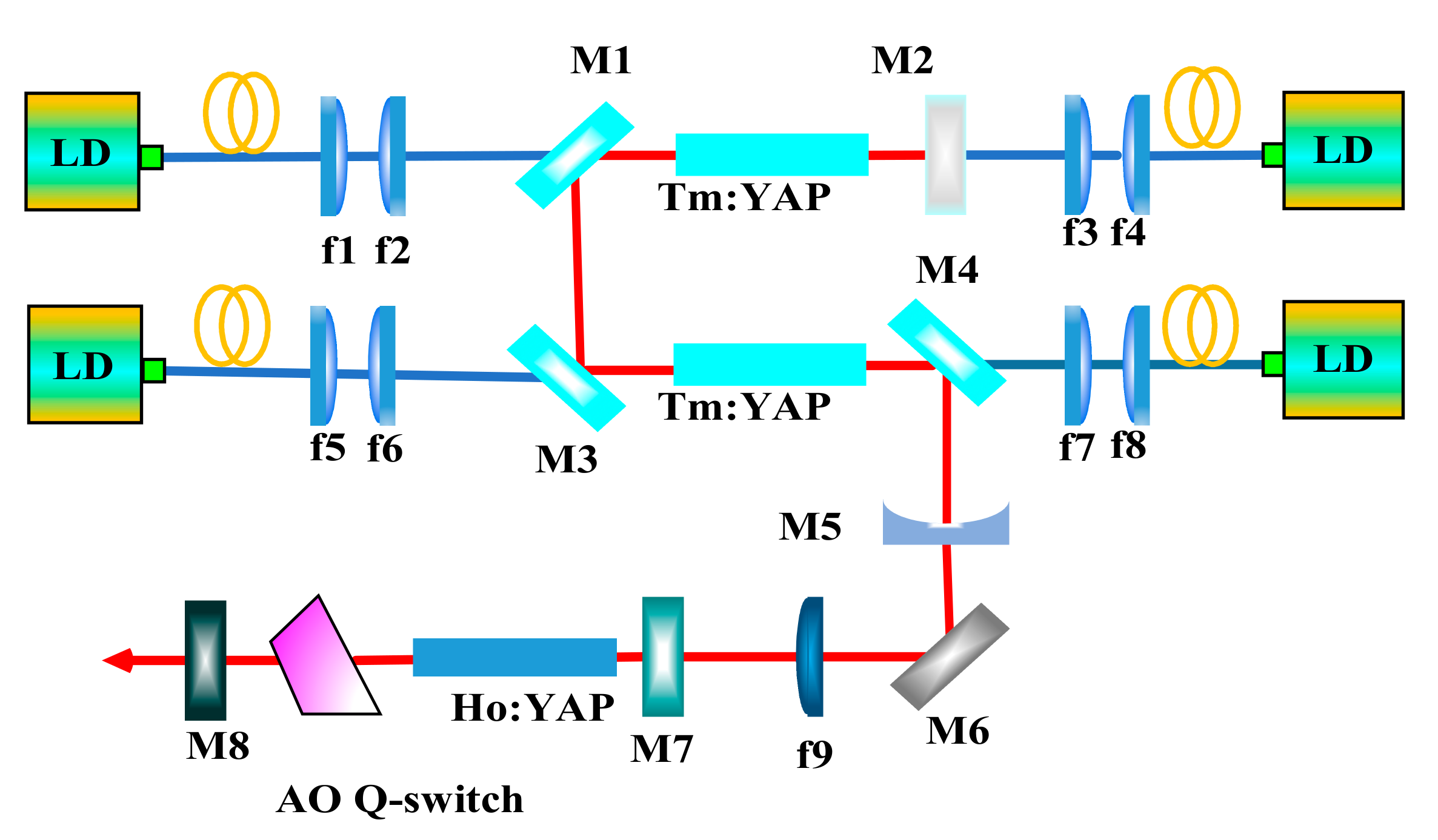
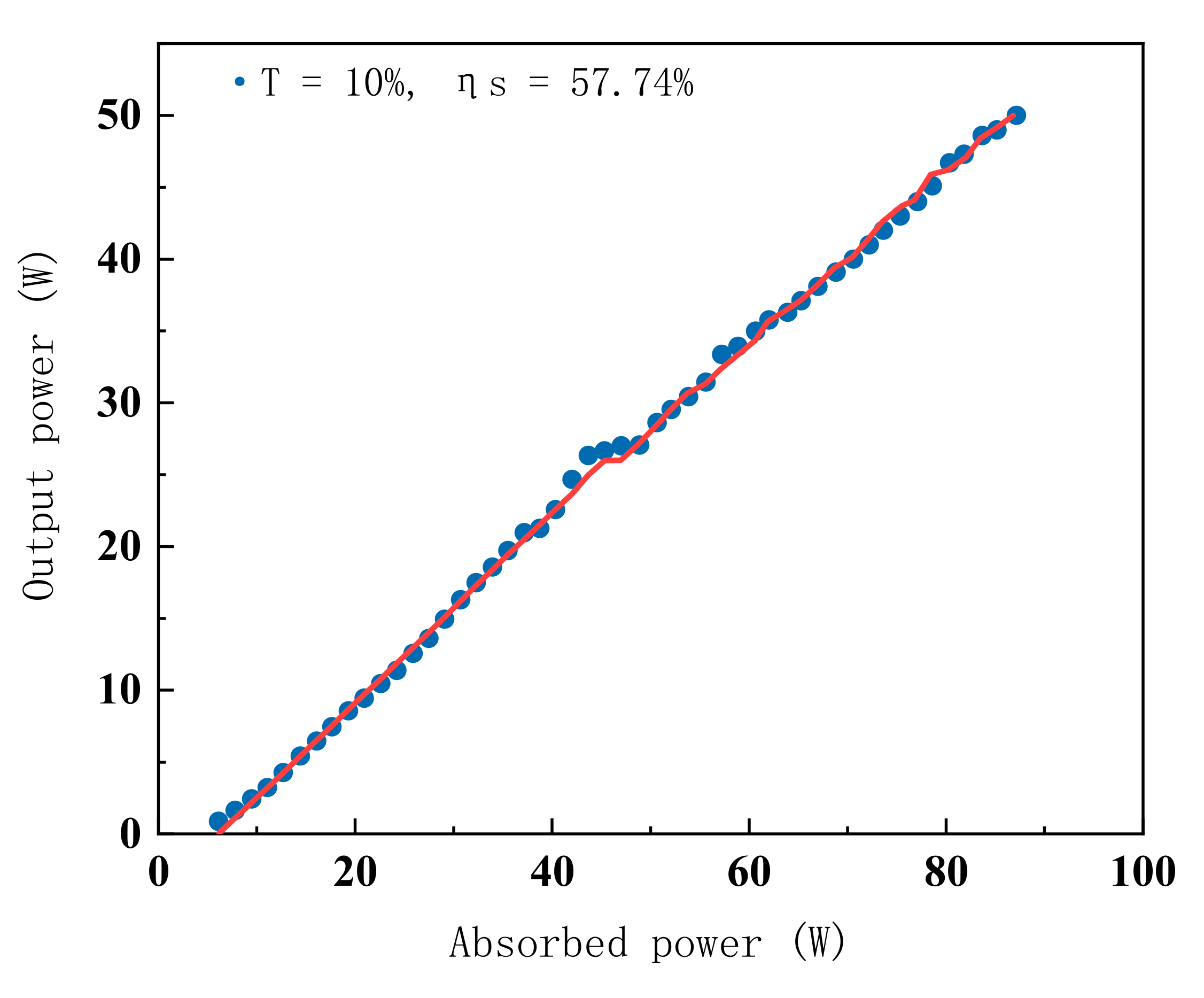
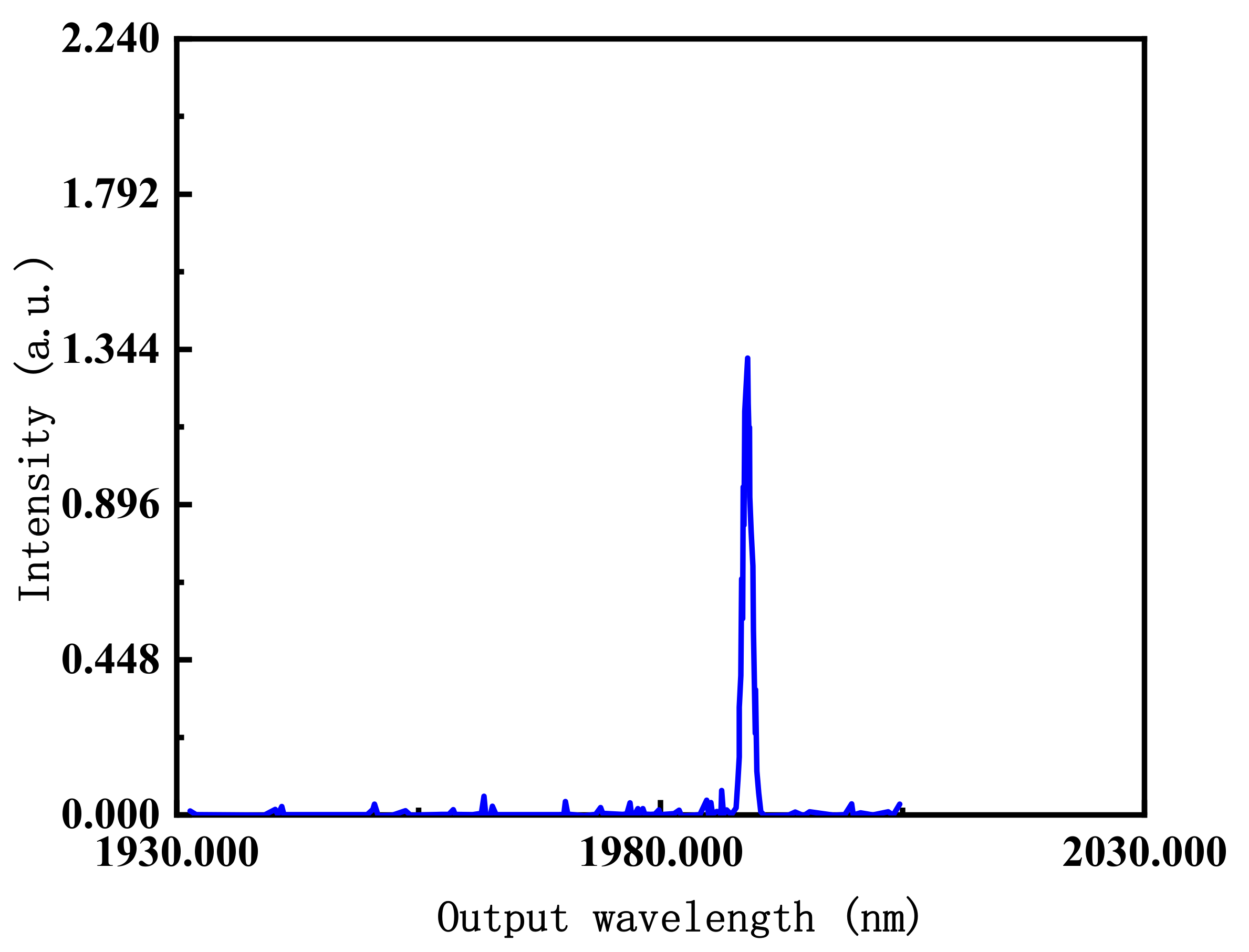
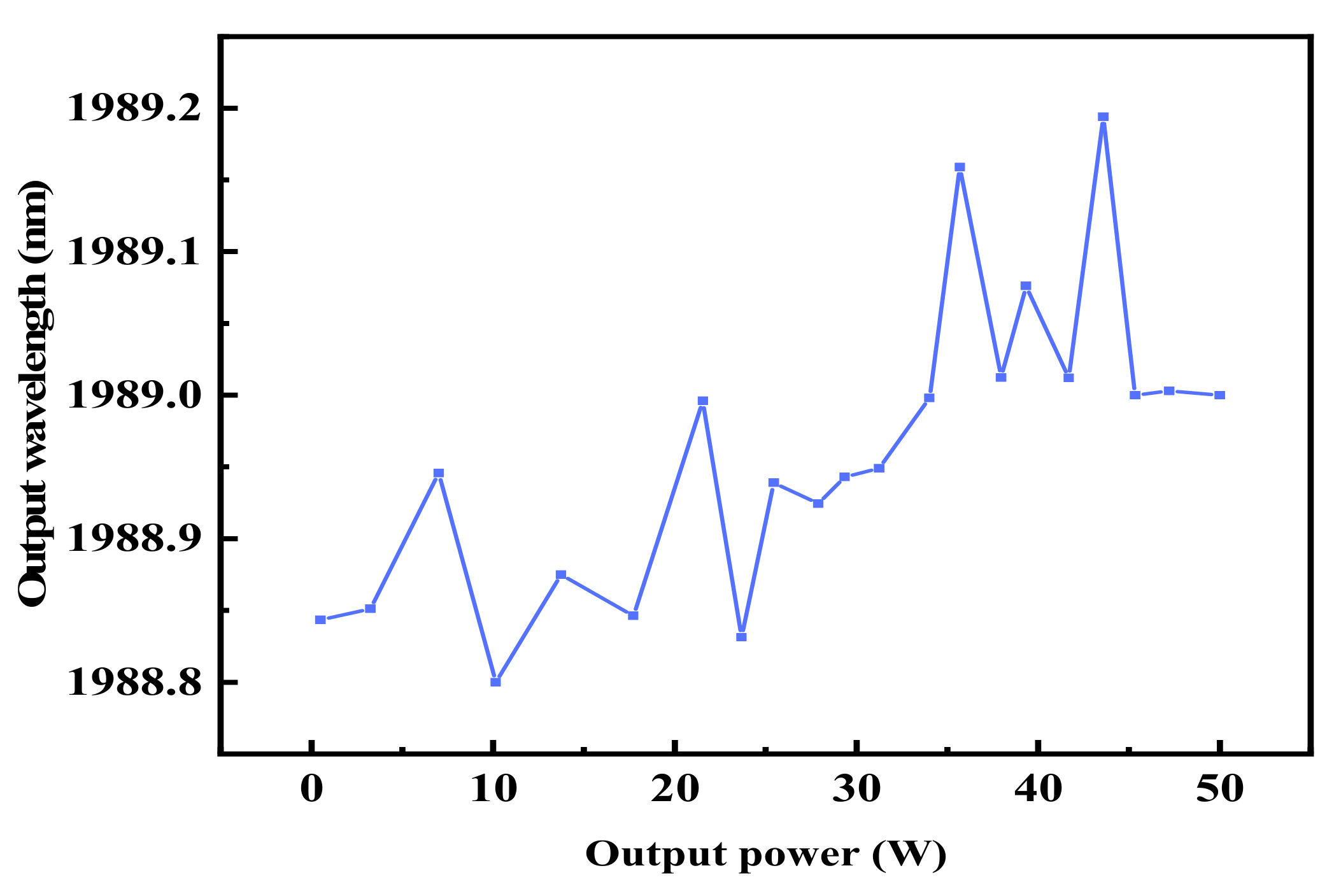
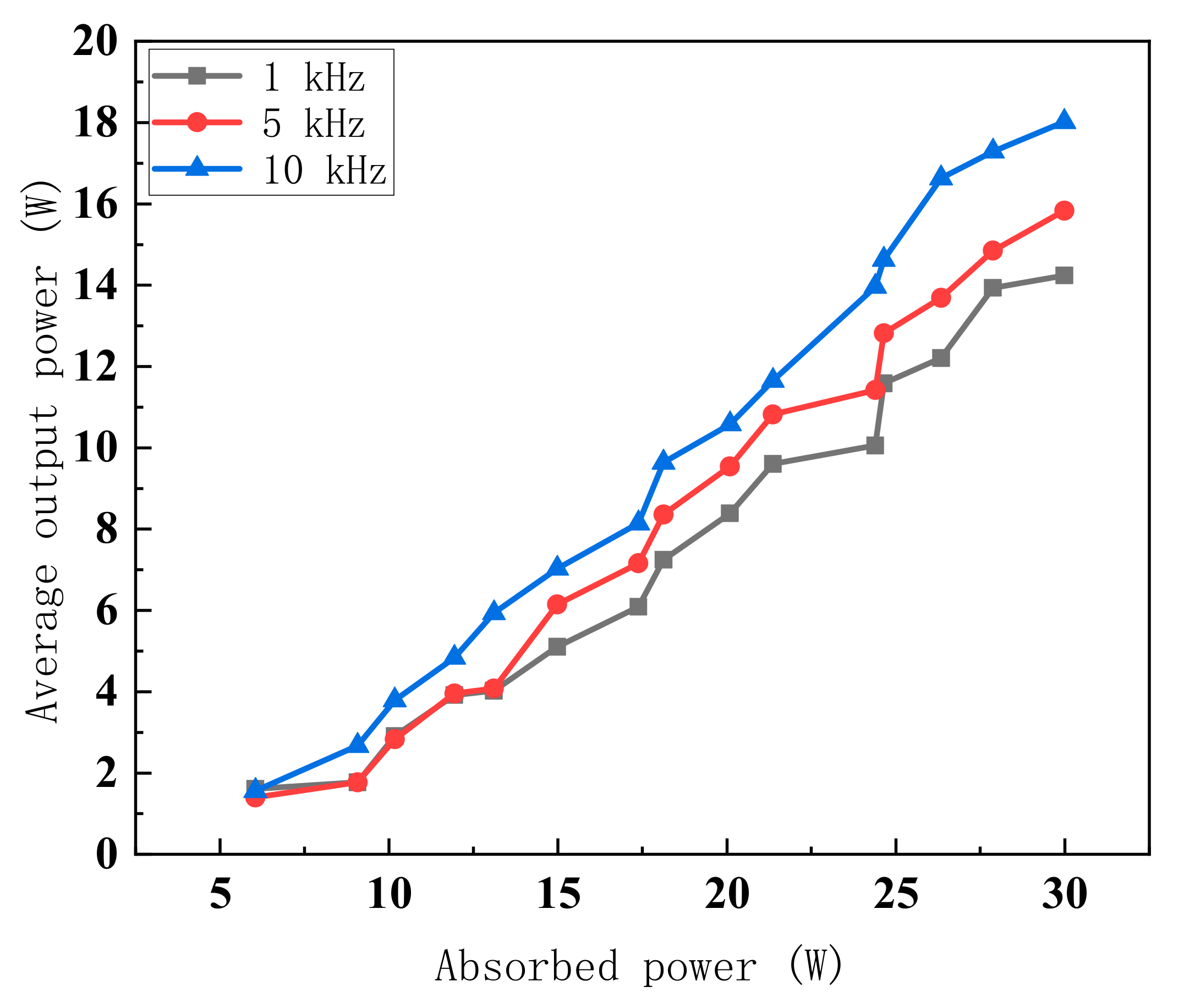
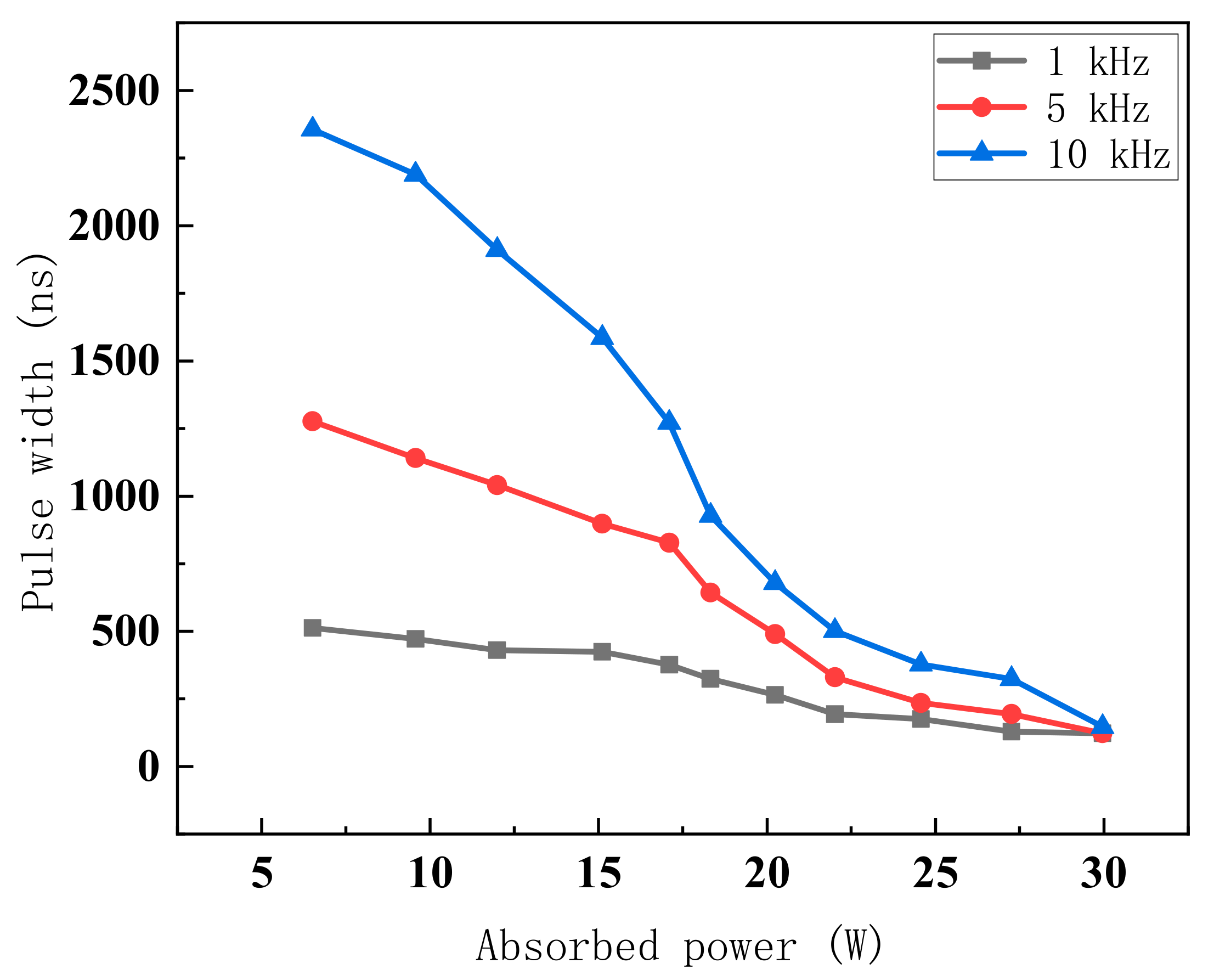
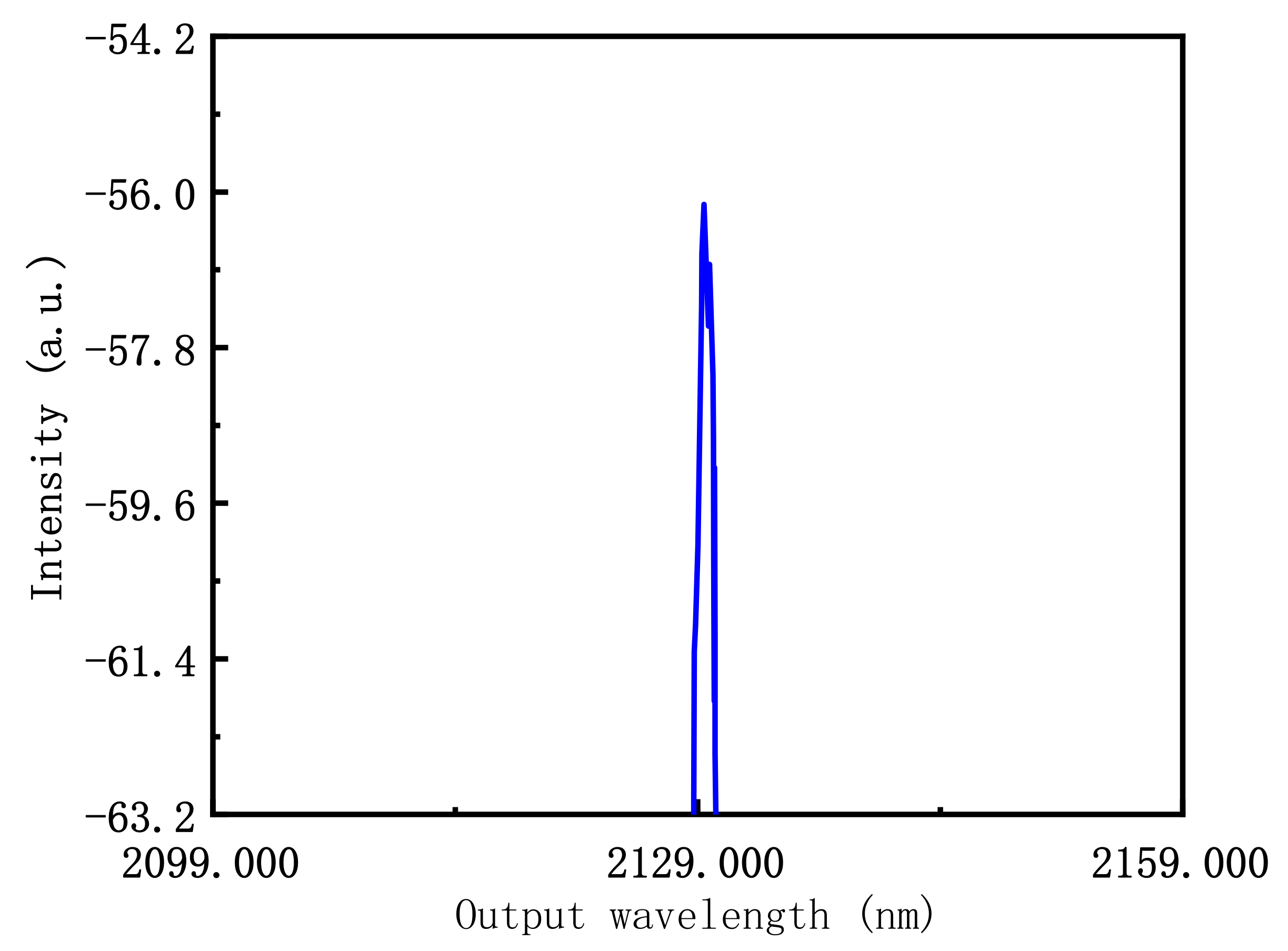

Publisher’s Note: MDPI stays neutral with regard to jurisdictional claims in published maps and institutional affiliations. |
© 2021 by the authors. Licensee MDPI, Basel, Switzerland. This article is an open access article distributed under the terms and conditions of the Creative Commons Attribution (CC BY) license (https://creativecommons.org/licenses/by/4.0/).
Share and Cite
Niu, C.; Jiang, Y.; Wen, Y.; Zhao, L.; Chen, X.; Wu, C.; Dai, T. High-Efficiency Ho:YAP Pulse Laser Pumped at 1989 nm. Crystals 2021, 11, 595. https://doi.org/10.3390/cryst11060595
Niu C, Jiang Y, Wen Y, Zhao L, Chen X, Wu C, Dai T. High-Efficiency Ho:YAP Pulse Laser Pumped at 1989 nm. Crystals. 2021; 11(6):595. https://doi.org/10.3390/cryst11060595
Chicago/Turabian StyleNiu, Chao, Yan Jiang, Ya Wen, Lu Zhao, Xinyu Chen, Chunting Wu, and Tongyu Dai. 2021. "High-Efficiency Ho:YAP Pulse Laser Pumped at 1989 nm" Crystals 11, no. 6: 595. https://doi.org/10.3390/cryst11060595
APA StyleNiu, C., Jiang, Y., Wen, Y., Zhao, L., Chen, X., Wu, C., & Dai, T. (2021). High-Efficiency Ho:YAP Pulse Laser Pumped at 1989 nm. Crystals, 11(6), 595. https://doi.org/10.3390/cryst11060595






